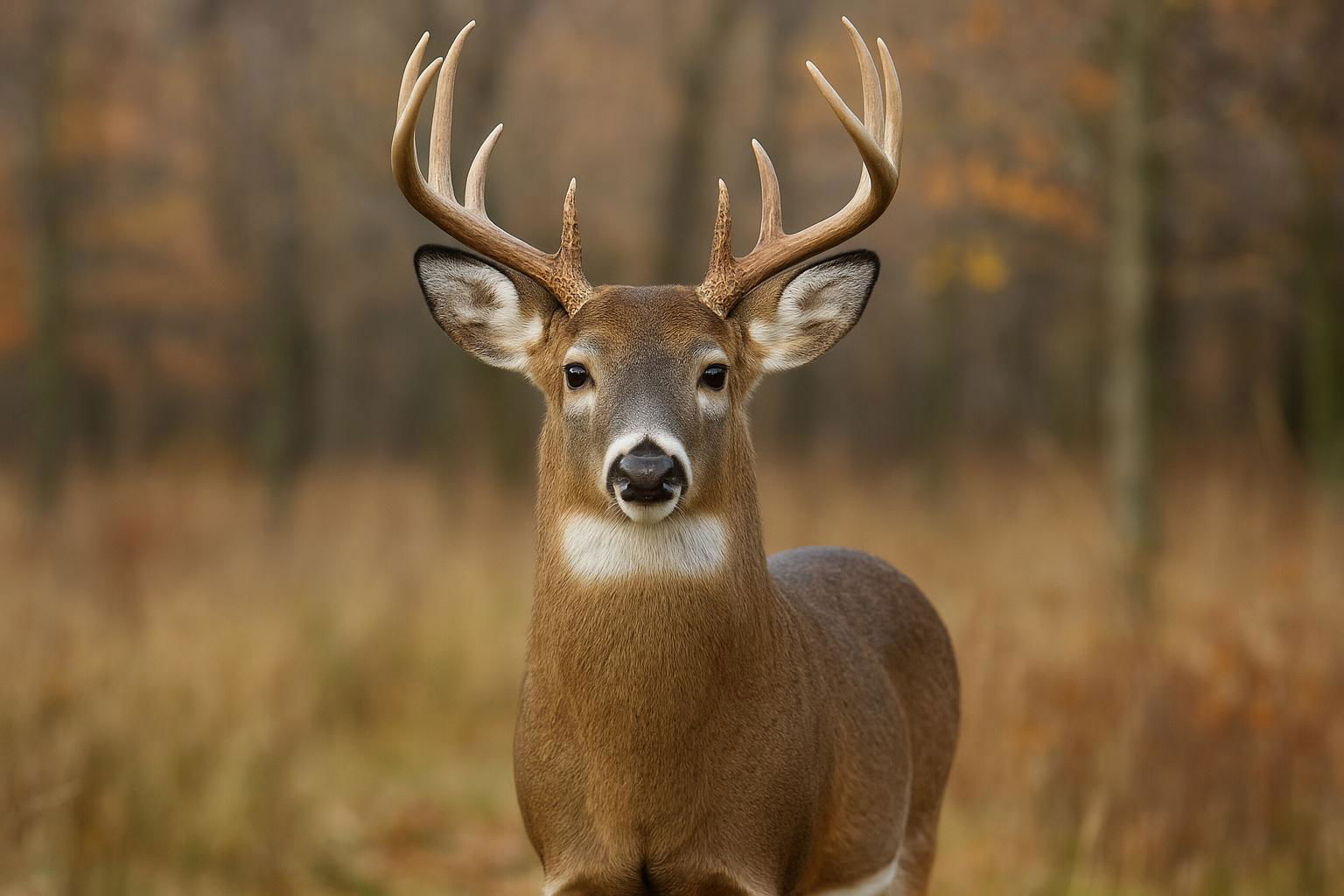
Northern
The Northern White-Tailed Deer, a distinct ecotype of the larger white-tailed deer species, is specifically adapted to the colder climates and diverse landscapes of North America’s northern regions. Known for their incredible resilience, these deer exhibit thicker, denser coats of fur that help them endure harsh winter temperatures. Their fur is typically a mix of gray and brown hues, which provides effective camouflage against the snowy and wooded environments they inhabit.
Northern White-Tailed Deer are slightly larger than their southern counterparts, with robust builds to store extra fat reserves during the lean months of winter. Adult males, or bucks, typically sport impressive antlers that grow in intricate patterns each year, a feature that is not only crucial for mating displays but also for navigating through dense forests. The females, or does, are similarly well-adapted, known for being attentive mothers that raise their fawns in secluded, sheltered areas until they are able to join the herd.
These deer are crepuscular, most active during the twilight hours of dawn and dusk. They are herbivores, with a diet that shifts seasonally, consisting mainly of woody browse, twigs, and acorns, transitioning to lush green vegetation as the seasons change. The Northern White-Tailed Deer play a vital role in their ecosystem, influencing plant community dynamics and serving as prey for predators such as wolves and mountain lions.
Renowned for their agility and speed, Northern White-Tailed Deer are capable of leaping great distances and can run at speeds up to 30 miles per hour when threatened. Their distinctive white under-tail, which flips up to signal danger, is a hallmark trait from which they derive their name. These deer are not only an iconic feature of the northern wilderness but also a species of considerable interest to wildlife enthusiasts and conservationists aiming to preserve their natural habitats amidst expanding human encroachment.
Colors: Red-Brown, Gray-Brown

 All Species & Breeds
All Species & Breeds
 Highland Cattle
Highland Cattle
 Miniature Donkeys
Miniature Donkeys
 All Species Directory
All Species Directory
 Highland Cattle in Virginia
Highland Cattle in Virginia
 Miniature Donkeys in Texas
Miniature Donkeys in Texas












